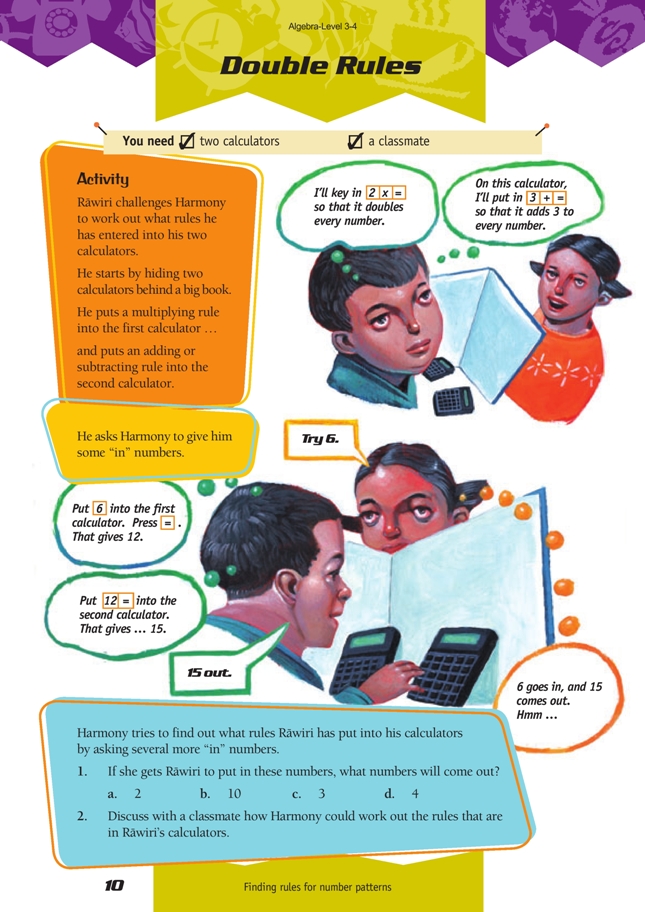This is a level 3 algebra strand activity from the Figure It Out series.
A PDF of the student activity is included.
Click on the image to enlarge it. Click again to close. Download PDF (237 KB)
find a number rule
use a symbols to express the rule
FIO, Level 3-4, Algebra, Double Rules, page 10
classmate
Most four-function calculators behave as described in the activity when a calculation is entered. However, Casio calculators need the operation button keyed in twice to activate the constant capability. For example, will set a doubling rule on most calculators, but on Casio calculators
must be entered.
The Find the Function game described in this activity is an excellent way for the students to find relationships between numbers without having to work with spatial patterns and practical tasks. Encourage the students to play the game regularly with a classmate.
Research indicates that it is unwise to train students to find the function by inputting 1 first, then 2, then 3, and so on. Students appear to learn more from having to apply the processes of arithmetic to discover the relationships. Consider the example given in the activity. Suppose that Harmony has asked Rāwiri to enter three numbers and has these in/out pairs:
Harmony realises that the function makes the input number larger by more than double. She might try experimenting with x 2 and x 3 as rules and then working out how much she would have to add or subtract to get the out number:
Using x 2
Using x 3
The missing operation in the x 2 table is constant, so Harmony has discovered that Rāwiri is using the rule ( x 2) + 3.
Answers to Activity
If this activity does not work on your calculator, try pressing the x operations key twice:
1. a. 7
b. 23
c. 9
d. 11
2. Harmony realises that each number that comes out is twice the original number plus 3. So the first calculator has to have ![]() in it and the second has to have
in it and the second has to have



